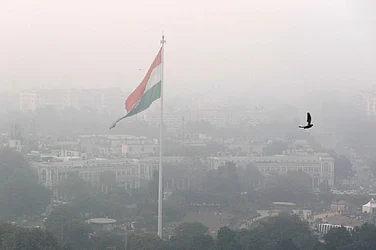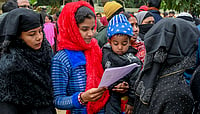In May this year, several reports surfaced of Indian women being lured by agents on the pretext of jobs like “domestic help” and “caretaker” with good salaries in the Middle East, taken on a so-called “extendable” tourist visa, then held captive with their passports and cellphones confiscated, and eventually sold to locals for anywhere from Rs 80,000 to Rs 1.5 lakh or more. Another similar case that caught global attention was when controversial social media influencer Andrew Tate and his brother Tristan Tate were arrested from their Bucharest home in Romania in December last year over grave charges of rape and trafficking of women. They were convicted last month. These are both incidents of human trafficking, something that has been a global and widespread concern for many decades and continues to be so.
While most of the recent cases of Indian women were from Muscat and Oman, human trafficking and migrant smuggling is prevalent in many other parts of the world. Despite strengthened vigilance, people continue to be victims of trafficking, sold for monetary gains around the world.
What is human trafficking?
According to the UN Office on Drugs and Crimes, human trafficking is defined as “the recruitment, transportation, transfer, harbouring or receipt of people through force, fraud or deception, with the aim of exploiting them for profit”. These are organised networks or individuals who take advantage of men, women and/or children of all ages who are vulnerable, desperate or simply seeking a better life.
Human trafficking takes place in many different forms like sexual exploitation, forced labour, forced begging, debt bondage, domestic servitude, organ removal, child recruitment in military, among others. The UN has, however, narrowed it down to three broad categories. These include – sex trafficking, labour trafficking, and the removal of organs.
Sex trafficking
The most prevalent form of human trafficking across the world is the recruitment and transport of men, women and children of all ages into the multi-million dollar international sex industry. Sex slavery affects all genders but violence is the highest against against women and children. It constitutes several types of forced servitude including prostitution, pornography, child sex rings, nude dancing, modelling and others.
Labour trafficking
Forced labour or labour trafficking is the illegal practice of involuntary servitude that often goes unnoticed by the general public. Labour trafficking was highly prevalent during the colonial era and also in the totalitarian regimes of Nazi Germany and the Soviet Union during Stalin’s rule. Some examples of labour trafficking include debt bondage or peonage (the enslavement of people for unpaid debts), domestic service, begging, forced labour at farms, sweatshops, hotels and restaurants.
Another way of labour trafficking is the recruitment of children as spies and soldiers, commonly seen in war-torn and hostile countries. These children are separated from their families and forced to be porters, cooks, guards, servants, messengers, spies or even frontline soldiers.
Organ removal
One of the more recent crimes related to human trafficking is luring people under false promises to convince them or even force them to sell their organs. According to the UN, recipients of the organs pay a much higher price than what the donors receive, part of which is taken by their brokers or agents, ambulance drivers, surgeons and hospital directors, who have been reported to be involved in the organised network. Incidents of organ removal trafficking are extremely common in parts of India. Many a time, the donor is not aware of the trafficking but is abducted and operated on.
Across the world, this black market thrives by trading bones, blood, and body tissues, while kidneys are the most commonly trafficked organ obtained illegally year after year.
UN’s 2022 Global Report on Human Trafficking
According to the UN Office on Drugs and Crime (UNODC)’s 2022 Global Report on Human Trafficking, the number of detected trafficking victims fell by 11 per cent in 2020 (latest available data), which was the first drop seen in 20 years but the Ukraine war is expected to have caused a new surge.
At the same time, it also said that climate change is increasingly becoming a reason behind the vulnerability to trafficking. The UNODC report, released on January 23, 2023, stated, "While a systematic global analysis of the impact of climate change in trafficking in persons is missing, community level studies in different parts of the world point at climate-induced disasters as root causes for trafficking in persons."
The UN report tracked trafficking patterns and flows across 141 countries and analysed cases detected between 2018 and 2021.
Although the reported cases of trafficking around the world have dropped significantly, there is a continuous need for concerted efforts to improve state support and legal remedies for anti-trafficking responses so victims of such violence do not have to rely on self-rescue.
Further, a sustained effort by governments to cooperate with the international community and assist in the prosecution of traffickers can protect victims and eradicate the problem.


























